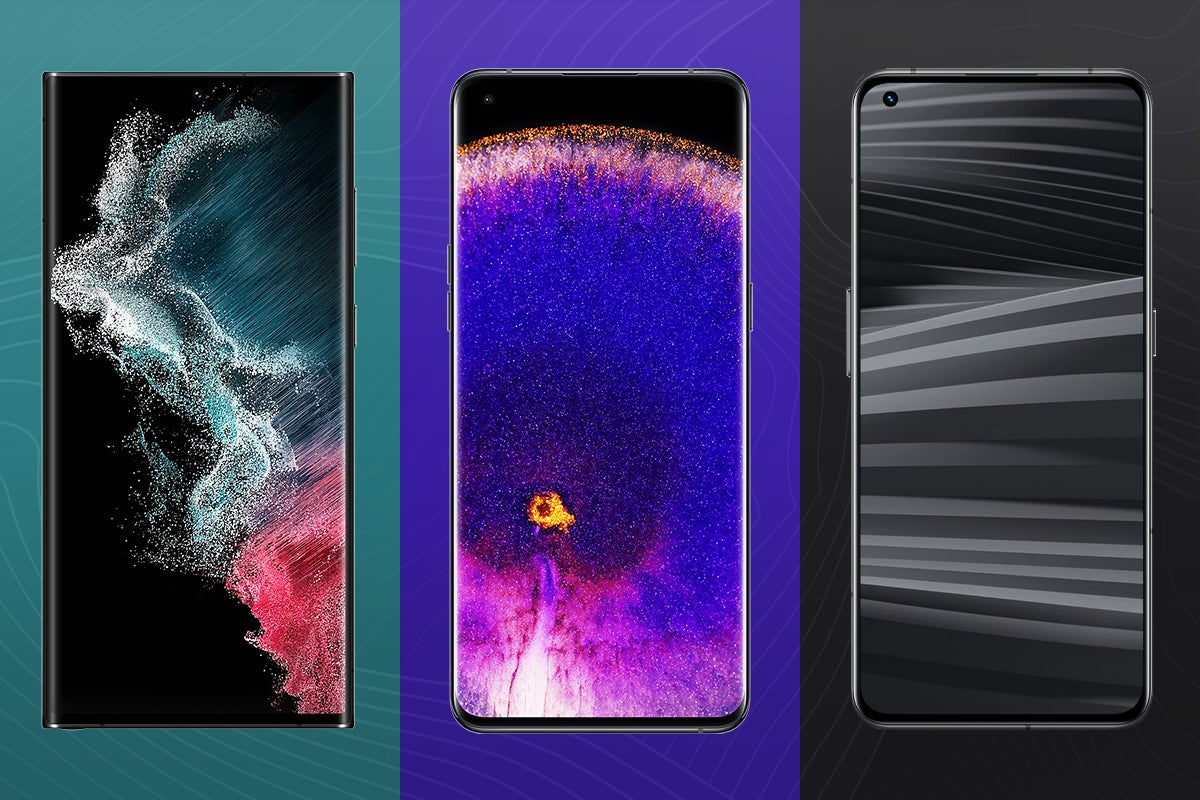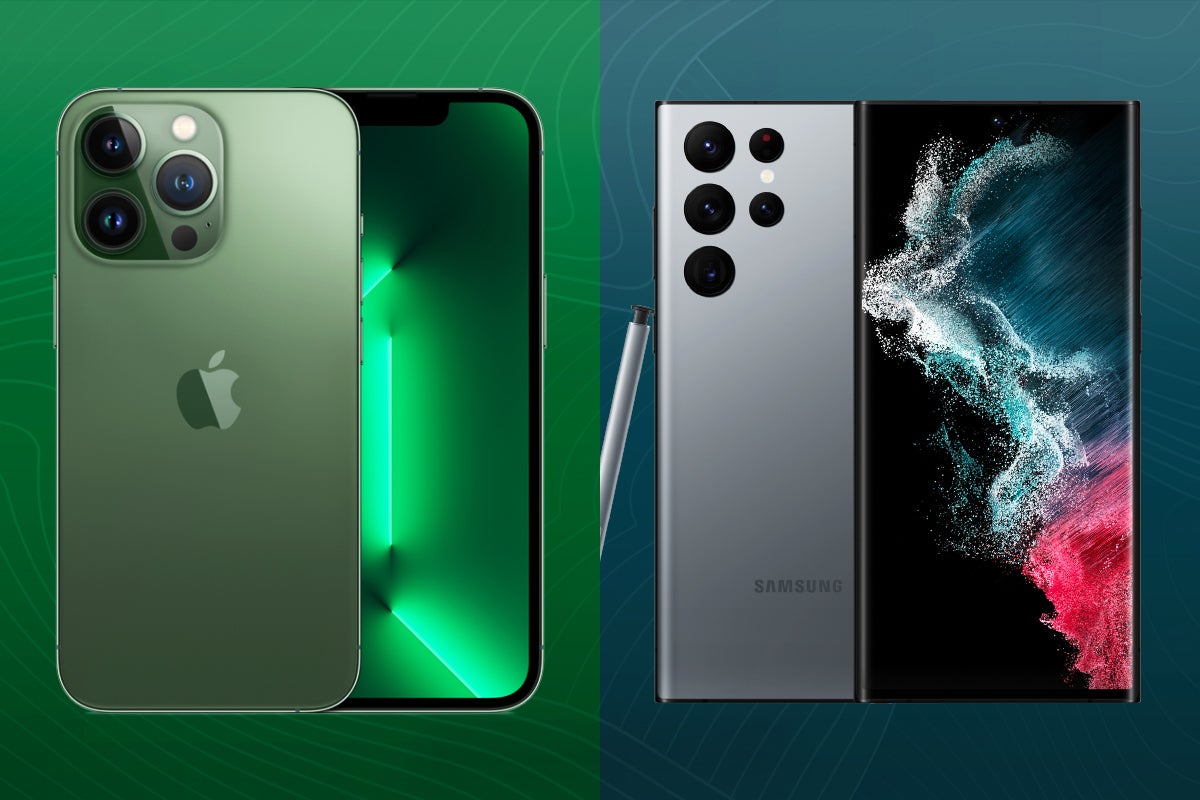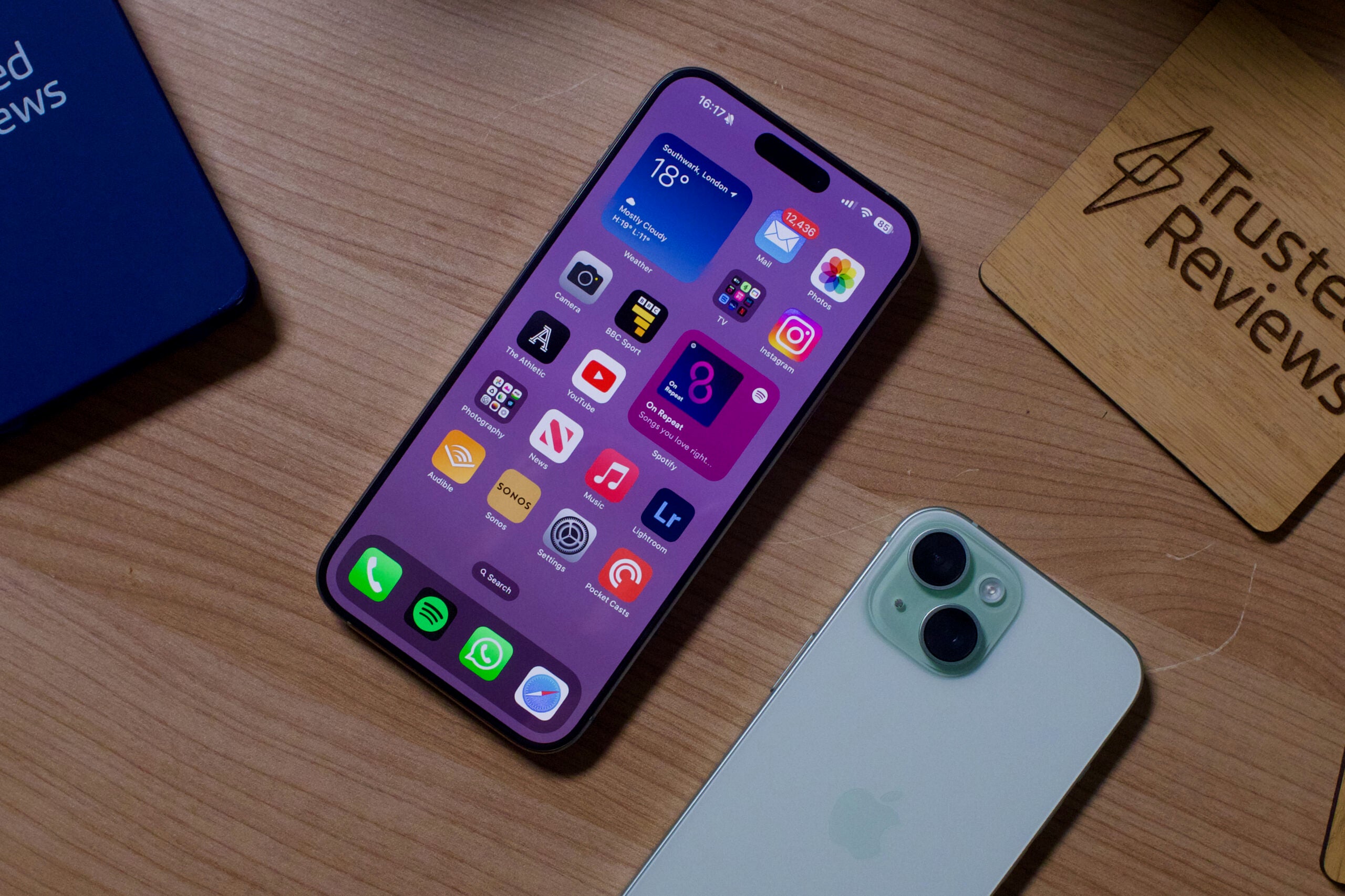OnePlus 10 Pro vs iPhone 13 Pro Max: Which phone should you get?
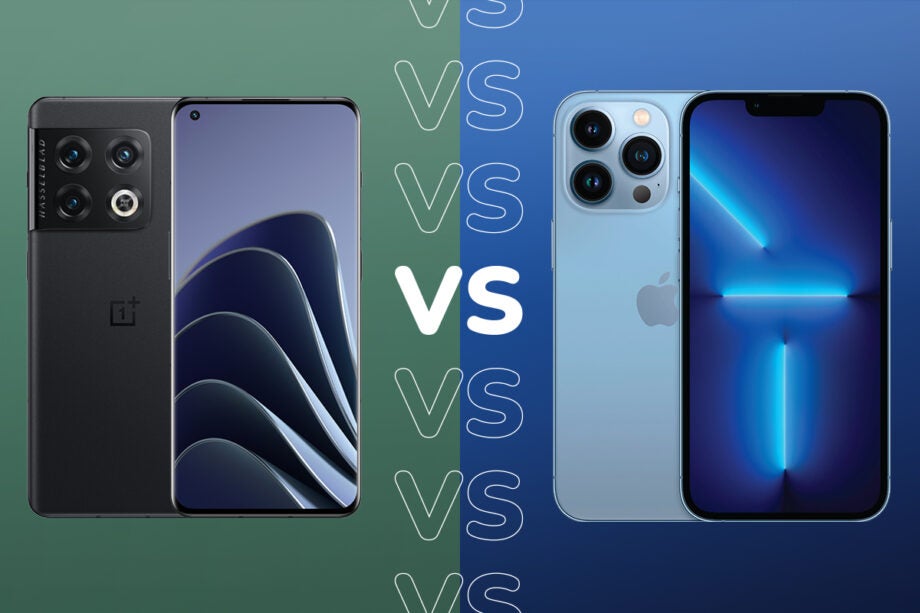
OnePlus recently announced its latest flagship phone, the OnePlus 10 Pro. But, how does it compare to Apple’s current high-end phone, the iPhone 13 Pro Max?
The OnePlus 10 Pro brings with it loads of exciting features, including a new, second-generation Hasselblad Camera for Mobile, a 120Hz display and a 80W fast charging support.
The iPhone 13 Pro Max packs its own 120Hz ProMotion display, a fantastic array of cameras and a long-lasting battery life.
Read on to discover how the two phones compare when it comes to price, design, camera, specs and features based on our early expert analysis.
Editor’s note: This article is based on our experience using the iPhone and expert analysis how the OnePlus compares to it at a technical level. We’ll update this page with a direct comparison detailing how the two compare with real world use after we’ve had the OnePlus 10 Pro in for review.
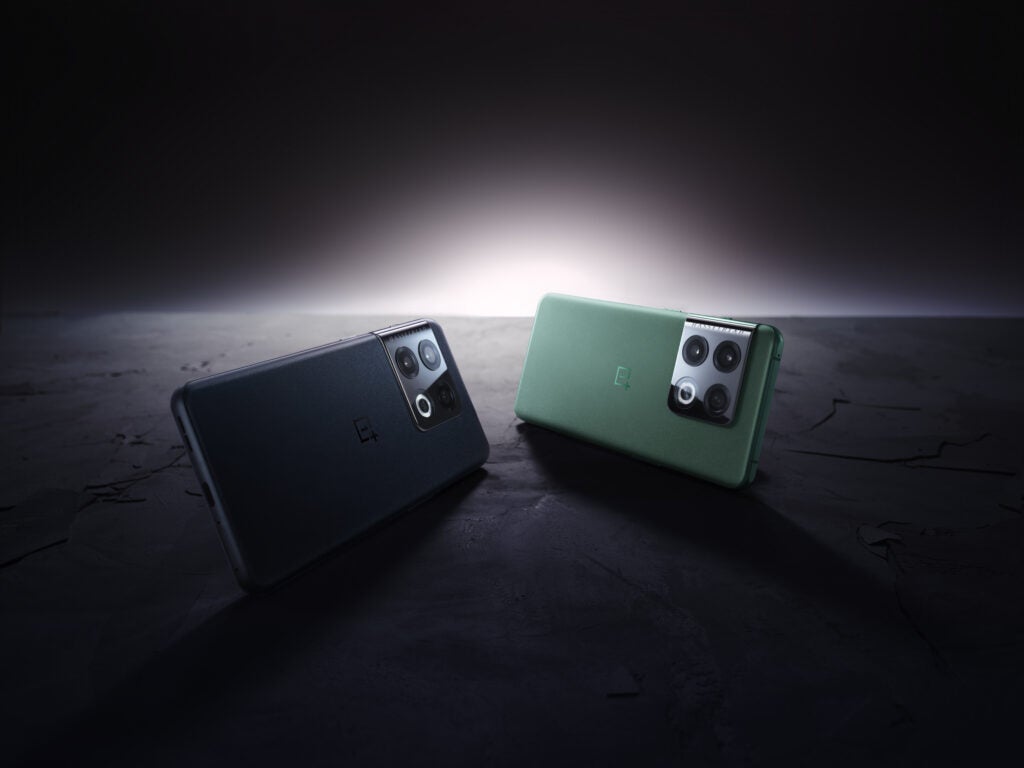
Release date and pricing
The OnePlus 10 Pro will launch in China on January 13, but you won’t be able to get your hands on the phone elsewhere until spring 2022.
At this point, there’s no word on how much the phone will cost. The OnePlus 9 Pro had an RRP of £829 for 8GB/128GB or £929 for 12GB/256GB, so we expect the 10 Pro to cost something similar.
The iPhone 13 Pro Max launched in September 2021, making it just a few months older than the OnePlus flagship. The 13 Pro Max costs £1049 for 128GB, £1149 for 256GB, £1349 for 512GB and £1549 for 1TB, making it significantly more expensive than the last OnePlus handset across the board.
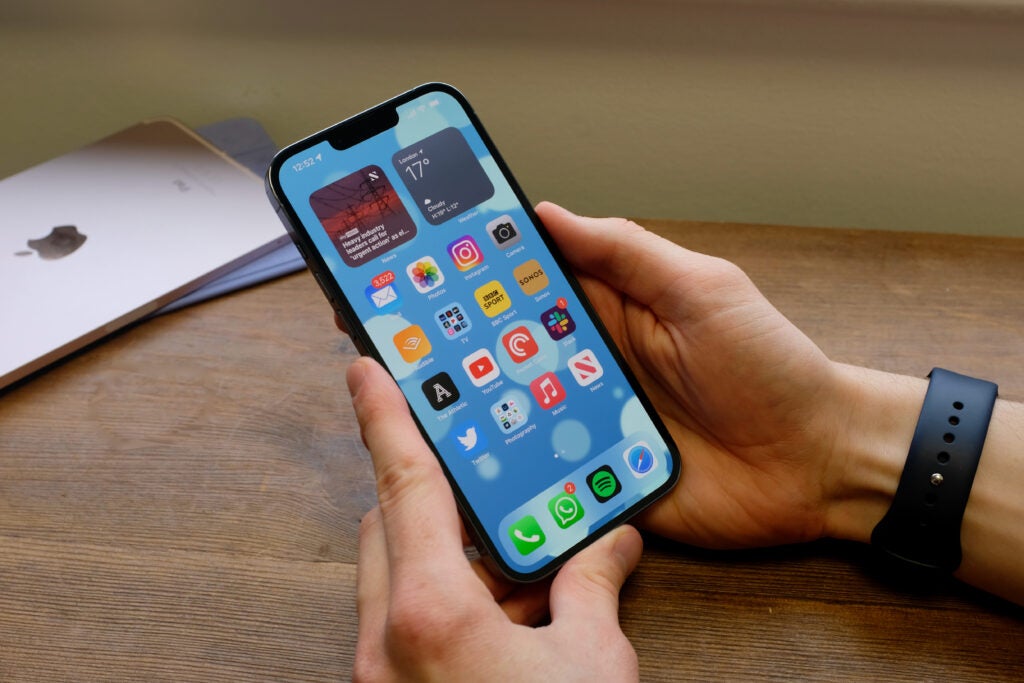
Design and display
The OnePlus 10 Pro has an aluminium frame and a glass panel on its rear, while the iPhone 13 Pro Max features a stainless steel design covered with a textured matte glass panel. Both phones include a square camera module on the upper left corner and their respective logos in the centre of the phone.
The OnePlus 10 Pro is available in Volcanic Black and Emerald Forest (green), while the 13 Pro Max comes in Graphite (black), Gold, Silver and Sierra Blue.
We don’t have the exact measurements for the OnePlus 10 Pro just yet, but the iPhone 13 Pro Max measures 160.8 x 78.1 x 7.65mm and weighs 238g.
The OnePlus 10 Pro features a punch-hole selfie camera in its display, whereas the iPhone 13 Pro Max has retained the notch design from previous iPhones.
As far as the displays themselves go, the OnePlus 10 Pro has a 6.7-inch QHD+ LTPO display with a 120Hz refresh rate. The 10 Pro also has Dual Color Calibration. According to OnePlus, this makes the 10 Pro the first device in the industry to deliver accurate and natural colours at both high and low brightness levels.
The iPhone 13 Pro Max, meanwhile, has a 6.7-inch OLED display with a lower resolution of 2778 x 1284 but support for Apple’s Super Retina XDR display tech, making it an HDR display. The iPhone’s screen is also a ProMotion display, meaning it has the same adaptive 120Hz refresh rate as the OnePlus phone.
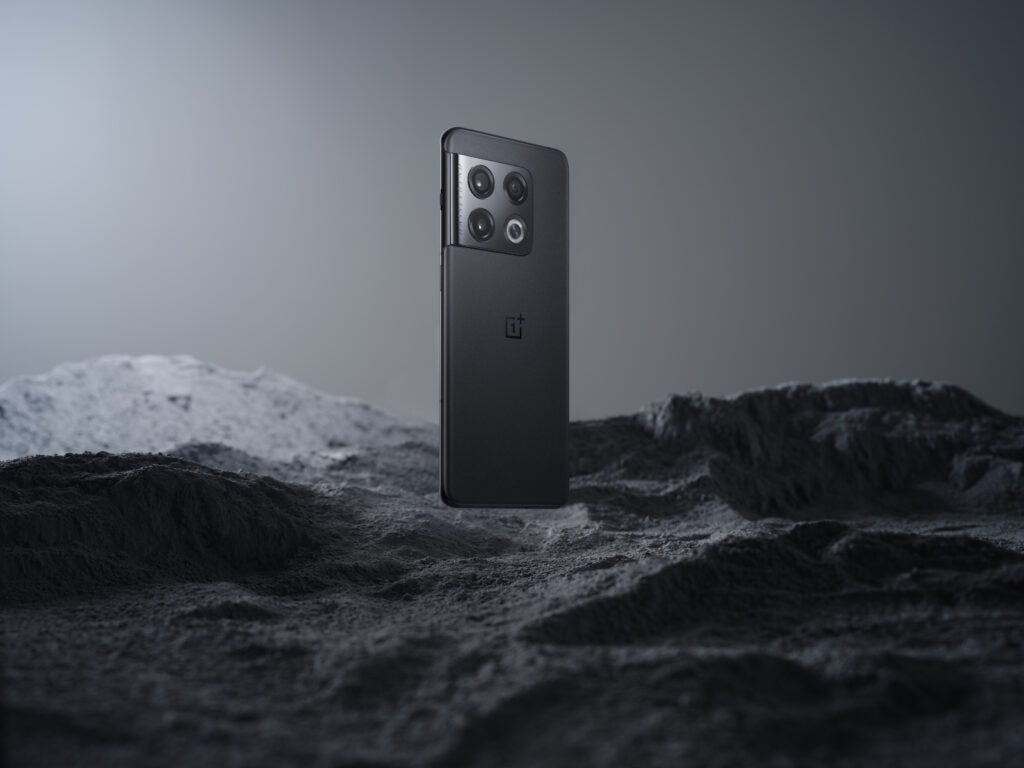
Camera
The OnePlus 10 Pro features the new second-generation Hasselblad Camera for Mobile. The triple camera consists of a 48-megapixel main sensor, an 8-megapixel telephoto sensor and a 50-megapixel ultra-wide angle sensor with a wider than average 150-degree field-of-view.
The iPhone 13 Pro Max likewise features a triple camera system. The iPhone has a 12-megapixel wide angle lens, a 12-megapixel ultra-wide angle lens with a standard 120-degree field-of-view and a 12-megapixel telephoto lens.
The OnePlus 10 Pro also includes a 32-megapixel front camera, where the iPhone 13 Pro Max has a 12-megapixel TrueDepth camera.
The OnePlus camera takes advantage of features like the OnePlus Billion Color Solution for Natural Color Calibration over one billion colours and 12-bit RAW+. Those interested in video can also adjust ISO, shutter speed and white balance and capture footage in a LOG format with no pre-set picture profile with the phone’s Movie Mode.
The brand is also offering a range of new colour styles for portraits, landscape scenes, and more, as well as a new Fisheye Mode which works with the ultra-wide 150-degree lens.
Of course, the iPhone 13 Pro Max is packed with its own camera features, including 4K video recording, Dolby Vision support for video and a new Cinematic mode, which allows you to record videos with a portrait mode-like shallow depth-of-field.
The phone also features Apple ProRAW, Auto image stabilisation, Night mode, Burst mode, Slo-mo and Time-lapse video features and a range of Portrait mode lighting settings.
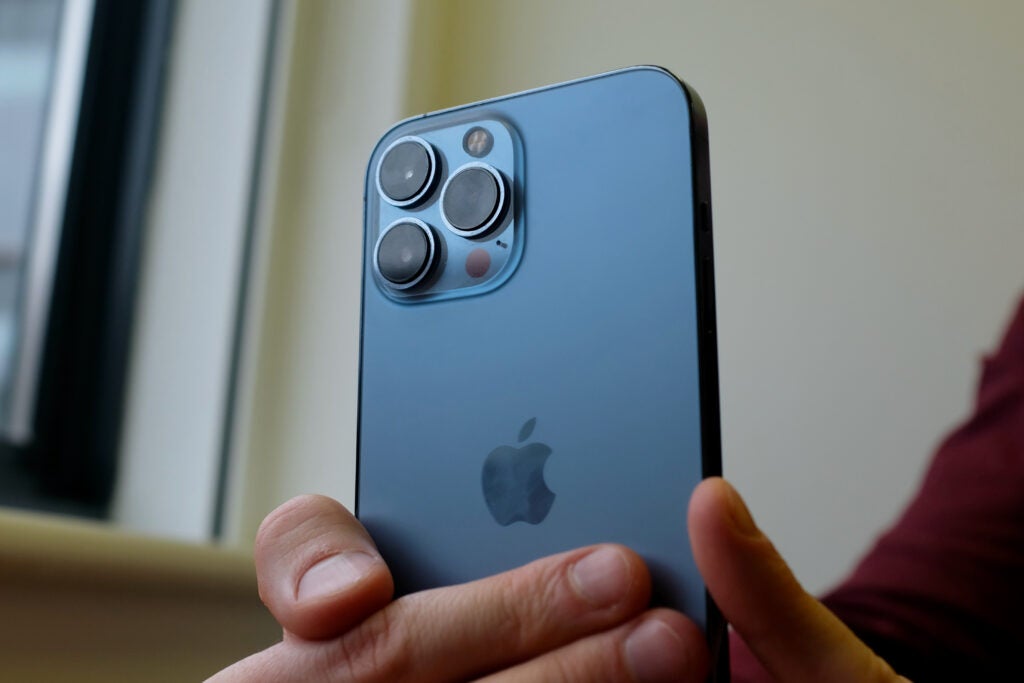
Specs and features
The OnePlus 10 Pro is powered by Qualcomm’s new flagship Snapdragon 8 Gen 1 chipset, while the iPhone 13 Pro Max runs on Apple’s own A15 Bionic.
We were impressed with how the iPhone performed in our review, though the Pro Max model’s performance didn’t differ dramatically compared with the other phones in the iPhone 13 range. We’ll have to wait until we get our hands on the OnePlus 10 Pro to see how to the two flagship chipsets compare in this respect.
The OnePlus 10 Pro includes up to 12GB of LPDDR5 RAM and up to 256GB of UFS 3.1 two-lane storage, while the iPhone 13 Pro Max packs a smaller amount of RAM at just 6GB but much more storage with up to 1TB available (if you’re willing to pay for it).
Moving on to software, the OnePlus 10 Pro runs its own OxygenOS 12 UI based on the latest version of Android, Android 12. Apple, of course, uses its own iOS 15, with the latest version shipping out on the 13 Pro Max.
The OnePlus packs a large 5000 mAh battery, but we’ll need to test it out ourselves to see exactly how long it can last. We found the iPhone 13 Pro Max had a very good battery life, outlasting previous flagships from OnePlus, Samsung and other big names.
Both phones also support fast charging and wireless charging, though the OnePlus seems to surpass the iPhone in this respect. The 10 Pro takes advantage of 80W SuperVOOC Flash Charge fast charging and 50W AirVOOC Wireless Flash Charge, while the iPhone 13 Pro Max supports 20W fast charging, 15W MagSafe wireless charging and just 7.5W Qi wireless charging.
To make this clearer, Apple claims the iPhone is capable of charging up to 50% in 30 minutes with a 20W adapter, while OnePlus says the 10 Pro can hit 100% in just 32 minutes with an 80W charger.
You can find all the specs in the table below:
OnePlus 10 Pro vs iPhone 13 Pro Max specs
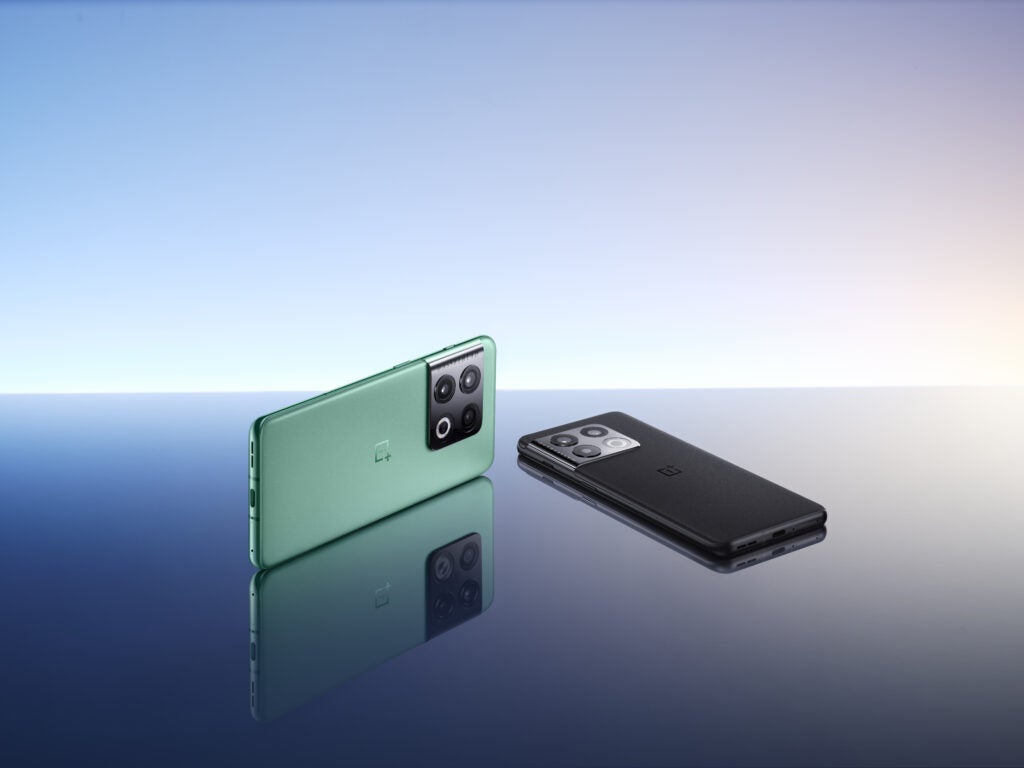
Early verdict
The OnePlus 10 Pro and the iPhone 13 Pro Max offer many of the same features, including 120Hz displays, impressive-sounding cameras and smartphone photography features, flagship chipsets and long battery lives.
While these features impressed us on the iPhone, we’ll have to wait until we get our hands on the OnePlus 10 Pro to determine how they stand up to each other.
At a first glance, the OnePlus 10 Pro offers faster charging, the latest Android OS, more RAM and (hopefully) a smaller price tag, whereas the iPhone 13 Pro is the best choice for iOS fans who want one of the best cameras on the market, up to 1TB of storage and a long-lasting battery life.


